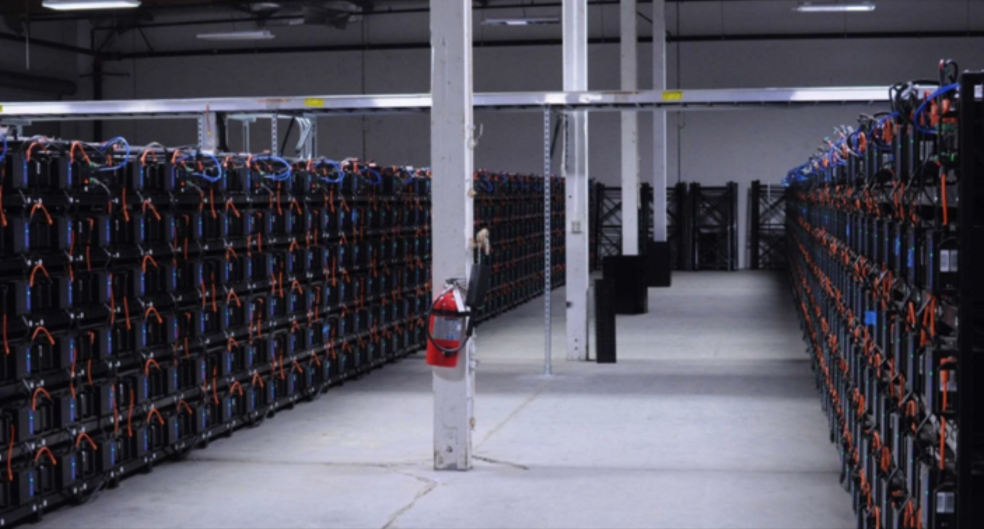what is battery sulfation
Battery sulfation is a common problem that occurs in lead-acid batteries, which are commonly used in various applications such as cars, boats, motorcycles, and uninterruptible power supplies. It is a process in which lead sulfate crystals form on the battery plates, reducing its capacity and overall performance.
Lead-acid batteries consist of positive and negative plates submerged in an electrolyte solution of sulfuric acid and water. During the battery discharge, lead sulfate is formed on both the positive and negative plates. This is a normal and reversible process. However, if the battery remains in a discharged state for an extended period or is undercharged, the lead sulfate crystals can become larger and harder, resulting in battery sulfation.
Sulfation is a gradual process that occurs over time and can be influenced by various factors. One of the primary causes of sulfation is leaving a battery in a discharged state for an extended period. When a battery is not in use or is not recharged regularly, the lead sulfate crystals harden and adhere to the battery plates. This reduces the surface area available for the chemical reactions necessary for the battery to function properly.
Another common cause of sulfation is undercharging. When a battery is not fully charged, the lead sulfate crystals do not get converted back into lead and sulfuric acid. Instead, they remain on the plates and continue to grow, further reducing the battery’s capacity. Over time, this can lead to permanent damage and significantly decrease the battery’s performance.
High temperatures can also accelerate the sulfation process. When a battery operates in hot environments, the chemical reactions occur faster, causing the lead sulfate crystals to grow more rapidly. This is why it is essential to keep batteries in cool and well-ventilated areas to minimize the risk of sulfation.
The effects of battery sulfation are numerous and can have a significant impact on the battery’s performance. As the lead sulfate crystals accumulate, the battery’s capacity decreases, resulting in reduced runtime and overall power output. Sulfation also increases the internal resistance of the battery, making it more challenging to recharge and causing it to lose charge more quickly.
To prevent battery sulfation, regular maintenance and proper charging techniques are essential. It is crucial to keep batteries fully charged, especially during periods of inactivity. If a battery is not in use for an extended period, it is recommended to recharge it every few weeks to prevent sulfation. Additionally, using a smart charger or charger maintainer can help prevent sulfation by providing the necessary voltage and current levels for proper battery maintenance.

If a battery has already suffered from sulfation, there are a few methods available to help reverse the process. One common method is desulfation, which involves applying high-frequency pulses or specific chemicals to break down the lead sulfate crystals and restore the battery’s performance. However, desulfation is not always successful and may not be suitable for severely damaged batteries.
In conclusion, battery sulfation is a common problem that affects lead-acid batteries. It occurs when lead sulfate crystals form on the battery plates, reducing its capacity and performance. To prevent sulfation, regular maintenance and proper charging techniques are crucial. If sulfation occurs, desulfation methods may be used to restore the battery’s performance. Understanding battery sulfation and taking necessary precautions can prolong the lifespan of lead-acid batteries and ensure optimal performance.
-
 Երկաթուղային տրանսպորտը փոխադրման կարևոր միջոց է ամբողջ աշխարհում: Այն օգտագործվում է արդյունաբերության տարբեր ճյուղերի համար մարդկանց, ապրանքների և հումքի փոխադրման համար։ Լոկոմոտիվը փոխադրման այս եղանակի սիրտն է, և այն գործարկելու և գործարկելու համար պահանջում է էներգիայի հուսալի աղբյուր: Լոկոմոտիվի ամենակարևոր բաղադրիչներից է...Կարդալ ավելին
Երկաթուղային տրանսպորտը փոխադրման կարևոր միջոց է ամբողջ աշխարհում: Այն օգտագործվում է արդյունաբերության տարբեր ճյուղերի համար մարդկանց, ապրանքների և հումքի փոխադրման համար։ Լոկոմոտիվը փոխադրման այս եղանակի սիրտն է, և այն գործարկելու և գործարկելու համար պահանջում է էներգիայի հուսալի աղբյուր: Լոկոմոտիվի ամենակարևոր բաղադրիչներից է...Կարդալ ավելին -
 Wireless keyboards have become an essential accessory for many computer users. They offer convenience and flexibility, allowing users to type and control their devices from a distance. One of the key components that power these wireless keyboards is lithium batteries. In this article, we will explore the benefits and features of wireless keyboards powered by lithium batteries. Lithium batteries...Կարդալ ավելին
Wireless keyboards have become an essential accessory for many computer users. They offer convenience and flexibility, allowing users to type and control their devices from a distance. One of the key components that power these wireless keyboards is lithium batteries. In this article, we will explore the benefits and features of wireless keyboards powered by lithium batteries. Lithium batteries...Կարդալ ավելին -
 Car batteries are the lifeline of your vehicle, and without them, your car won start. The battery pack is responsible for providing the necessary power to start the engine and run the electronics in your car. A reliable starter battery pack is essential for the smooth functioning of your car. In this article, we will discuss the importance of...Կարդալ ավելին
Car batteries are the lifeline of your vehicle, and without them, your car won start. The battery pack is responsible for providing the necessary power to start the engine and run the electronics in your car. A reliable starter battery pack is essential for the smooth functioning of your car. In this article, we will discuss the importance of...Կարդալ ավելին -
 Լիթիումային մարտկոցները տարիների ընթացքում ավելի ու ավելի տարածված են դարձել՝ շնորհիվ իրենց բարձր էներգիայի խտության և երկար ցիկլի կյանքի: Նրանք այժմ սովորաբար օգտագործվում են տարբեր ծրագրերում, ինչպիսիք են էլեկտրական մեքենաները, շարժական էլեկտրոնիկան և վերականգնվող էներգիայի համակարգերը: Որոշ դեպքերում կարող է անհրաժեշտ լինել մի քանի լիթիումային մարտկոցներ միացնել հաջորդաբար՝ ցանկալի լարման մակարդակին հասնելու համար: Այնուամենայնիվ, կան...Կարդալ ավելին
Լիթիումային մարտկոցները տարիների ընթացքում ավելի ու ավելի տարածված են դարձել՝ շնորհիվ իրենց բարձր էներգիայի խտության և երկար ցիկլի կյանքի: Նրանք այժմ սովորաբար օգտագործվում են տարբեր ծրագրերում, ինչպիսիք են էլեկտրական մեքենաները, շարժական էլեկտրոնիկան և վերականգնվող էներգիայի համակարգերը: Որոշ դեպքերում կարող է անհրաժեշտ լինել մի քանի լիթիումային մարտկոցներ միացնել հաջորդաբար՝ ցանկալի լարման մակարդակին հասնելու համար: Այնուամենայնիվ, կան...Կարդալ ավելին -
 In recent years, there has been a growing demand for more efficient and reliable battery solutions, especially in the automotive industry. Lithium starter batteries have emerged as a popular choice for their compact size, lightweight, and high energy density. In this article, we will explore the benefits and applications of lithium starter batteries. Firstly, let's define what a starter...Կարդալ ավելին
In recent years, there has been a growing demand for more efficient and reliable battery solutions, especially in the automotive industry. Lithium starter batteries have emerged as a popular choice for their compact size, lightweight, and high energy density. In this article, we will explore the benefits and applications of lithium starter batteries. Firstly, let's define what a starter...Կարդալ ավելին -
 Are you looking for a reliable power storage solution? Look no further than the High-Capacity 12V 100Ah LiFePO4 lithium battery. This advanced battery technology offers several benefits over traditional lead-acid batteries, including longer lifespan, faster charging, and more efficient power delivery. At the heart of the High-Capacity 12V 100Ah LiFePO4 lithium battery is advanced lithium iron phosphate (LiFePO4) chemistry....Կարդալ ավելին
Are you looking for a reliable power storage solution? Look no further than the High-Capacity 12V 100Ah LiFePO4 lithium battery. This advanced battery technology offers several benefits over traditional lead-acid batteries, including longer lifespan, faster charging, and more efficient power delivery. At the heart of the High-Capacity 12V 100Ah LiFePO4 lithium battery is advanced lithium iron phosphate (LiFePO4) chemistry....Կարդալ ավելին -
 As the world continues to shift towards renewable energy sources, the importance of energy storage solutions has become more significant than ever before. One of the most promising solutions is Lithium Iron Phosphate (LiFePO4) battery packs. These batteries are known for their impressive performance, longevity, and safety, making them an ideal choice for a wide range of applications. What...Կարդալ ավելին
As the world continues to shift towards renewable energy sources, the importance of energy storage solutions has become more significant than ever before. One of the most promising solutions is Lithium Iron Phosphate (LiFePO4) battery packs. These batteries are known for their impressive performance, longevity, and safety, making them an ideal choice for a wide range of applications. What...Կարդալ ավելին

